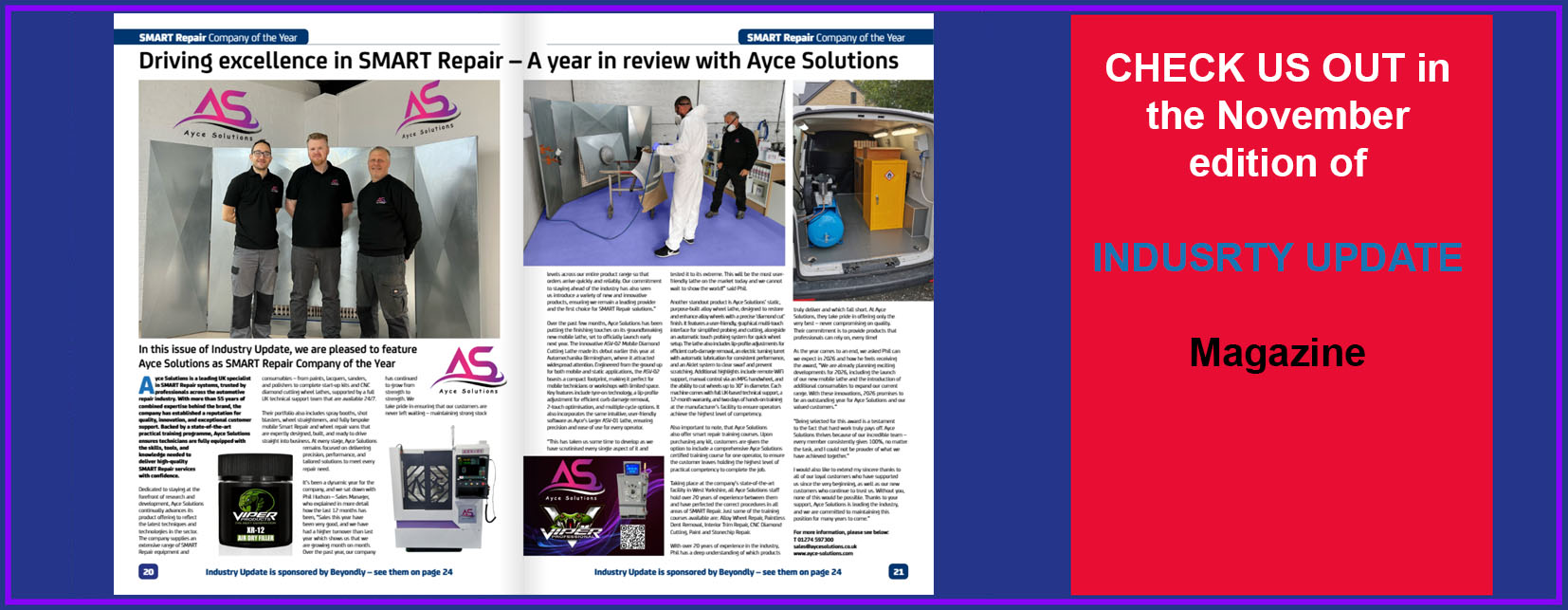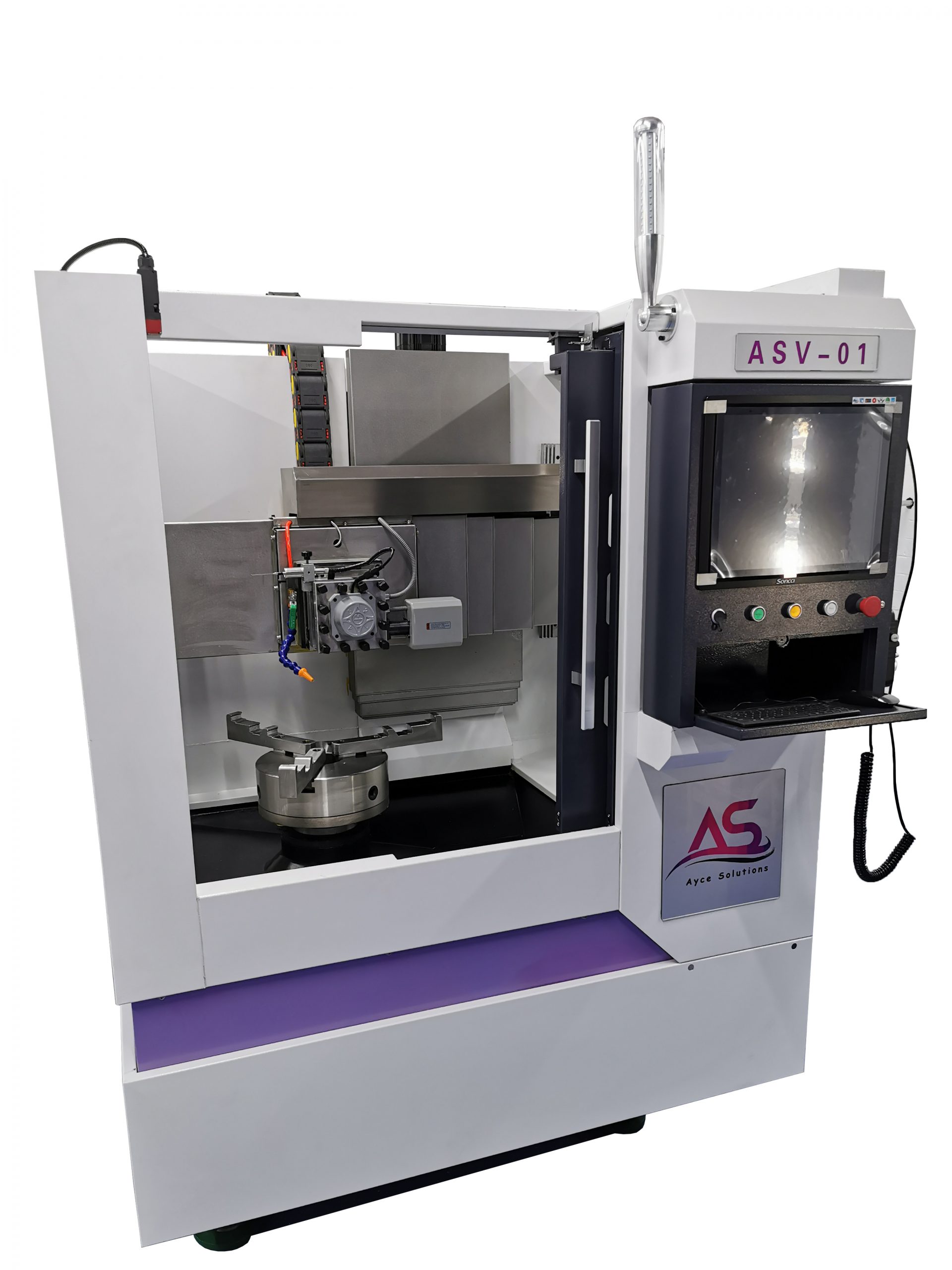A CNC Machine (short for Computer Numerical Control Machine) is an advanced manufacturing tool that precisely follows computer programmes. They are used to cut, shape, and drill materials such as wood, metal, and plastic. CNC Machines use digital designs to guide their movements with incredible accuracy and consistency, ensuring uniformity and efficiency. They are fundamental for mass production in fields such as automotive and aerospace engineering.
Why are Computer Numerical Control Machines essential? There are many factors which make CNC Machining a vital part of modern businesses, including the following:
- Their wide range of uses such as prototyping and manufacturing components
- The variety of CNC machine types, including Milling Machines or Diamond Cutters, for example
- Accessible training and support resources
In this article, you can find out more about the types of CNC Machines, what they are and their uses. Keep reading to learn more about what we, at Ayce Solutions, can provide to assist you and your team in developing key skills and specialist knowledge.
What Is a CNC Machine?
A CNC Machine is an automated tool that uses a computer to control a machine’s movements and operations. These computers are programmed by the user using CAD software such as SolidWorks, which allows your product to be fully customisable. This design is then turned into G-Code (A CNC Machine’s language) using CAM software.
The actual shaping/cutting method varies machine to machine. These differences are outlined in the section below.
What Are CNC Machines Used for?
Computer numerical control machinery’s most common use is in manufacturing objects that require precision, such as furniture, jewellery and automotive parts. Each CNC machine type has different materials it is compatible with, therefore providing many different applications.
A wide array of industries use CNC machinery; for example, a jeweller may use a CNC machine to engrave intricate designs on their products. An aerospace manufacturer, on the other hand, may use CNC machines to create various electronic components used in aircraft systems, such as control panels and sensors.
Their versatility and reliability make computer numerical control machines useful in many different industries. Read on to learn more about each type of CNC machine.
What Are the Five Common Types of CNC Machines?
CNC machining is a broad term for a range of different devices all with the same goals. These include ensuring precision, consistency, and automation. Find below the most common types of CNC Machines, their uses and benefits:
CNC Milling Machine
A CNC milling machine removes unwanted material from a workpiece using rotating cutting tools. The cutting tool is rotated against the stationary material to allow further control. CNC milling machines cut the material into precise shapes and depths using the X, Y and Z axes.
Some of the main milling operations include cutting flat surfaces, grooves, channels, and contours. Therefore, its typical applications include manufacturing the following:
- Engine parts
- Aerospace components
- Mould and Die manufacturing
One of the key benefits of CNC milling machines is that they are widely compatible with a wealth of materials, such as metal, plastic and foam.
CNC Lathe Machine
Unlike CNC milling machines, CNC lathe machines work by rotating the workpiece against fixed cutting tools. These tools are moved linearly (along X and Z axes) into the rotating material to shape it. This makes the CNC lathe machine ideal for producing round parts.
Operations can include:
- Reducing the diameter of the material
- Cutting flat surfaces
- Drilling holes in materials along the axis of rotation
CNC lathe machines are capable of producing complex geometries. They are also extremely precise, which is especially useful for fabricating symmetrical parts.
CNC Router Machine
A CNC router is used for cutting, carving, engraving, and shaping a wide range of materials. These materials can include wood, plastic, foam, aluminium, and even soft metals. It operates similarly to a CNC milling machine, but is optimised for softer materials and larger work areas.
To generate a piece, the material is first secured to the router bed using clamps, screws, or vacuum hold-down systems. A specific router bit is then selected and loaded into the spindle. The machine moves the router bit along X, Y, and Z axes to carve out the shape.
Operations include:
- Cutting
- Engraving
- 3D carving
- Drilling
CNC router machines are great for furniture making, as they are optimised for cutting large work areas and soft materials. CNC routers are extremely versatile as they come in three, four and five axes, allowing the user to carve in multiple rotations.
CNC Diamond Cutter
CNC diamond cutting refers to a computer-controlled machining process that uses diamond tools (the hardest known material) to achieve extremely smooth, accurate surfaces. It’s not a type of machine like a lathe or router, but rather a cutting method or technique used in high-end CNC machines.
Diamond cutting is incredibly precise. The machines have sub-micron (0.0001 mm) tolerance. It is, therefore, most commonly used in Optics (lenses and mirrors) or watchmaking.
CNC Diamond Cutting is something that we, at Ayce Solutions, specialise in. We offer extensive, on-site training for you and your team. You can find out more, along with requesting availability, here!
CNC Plasma Machines
A CNC plasma cutter is a machine that uses a high-velocity jet of ionised gas (plasma) to cut through electrically conductive materials. These materials can include steel, aluminium, brass, and copper. The CNC controller automates and precisely guides the plasma torch along a programmed path.
The plasma can reach temperatures over 20,000°C (36,000°F), which instantly melts the metal. Plasma machines are commonly used for automotive parts, artistic metal signs and agricultural equipment.
How Long Does It Take to Learn CNC Machining?
As CNC machines are so different from one another, the complexity of machining varies as well. With the correct tools and resources, machines can take as little as a few weeks to understand, but they can take years to master.
At Ayce Solutions, we provide an extensive training course for CNC Diamond Cutting, and soon, CNC lathe machines as well! Starting from just £900 plus VAT, you and your team can start your journey in CNC Machinery here.
In Summary:
- Whether you are looking to reduce human error or up-scale your manufacturing, CNC machines offer the automation and precision necessary to stay competitive in your industry.
- At Ayce Solutions, we can provide you with the tools necessary to succeed in CNC machining.
Place an Order for a CNC Machine with Ayce Solutions
At Ayce Solutions, we have over 48 years of experience and expertise combined, 37 of which have been dedicated to training others in the automotive industry.
We can provide you not just with the CNC diamond cutting wheel lathe, but with a quality training course to match! Annual services and all usable consumables can also be provided.
If you are looking to take that next step in developing your expertise, see the links below to our CNC machine training and retail page:
Don’t just take our word for it! Explore our testimonials to hear directly from past trainees. You can also find reviews of our services from those who have purchased our CNC alloy wheel diamond cutting machine.
FAQs
What Industries Commonly Use CNC Machining?
The following industries commonly utilise CNC technology to generate key components:
The Automotive Industry
From prototyping and manufacturing components to tool creation, CNC machines are great for producing gearboxes, engine parts, and other useful mechanisms.
The Medical Industry
CNC plays a vital role in the medical field, as this is where uniformity and precision are most important. Implants, prosthetics and other intricate medical devices are generated using CNC machinery. As CNC machinery is extremely versatile in terms of the materials they are compatible with, biocompatible materials can be used. Therefore, they are ideal for the medical industry.
Electronics
Key components, such as circuit boards, connectors and heat sinks, are generated using CNC technology. In a constantly growing industry, speed and efficiency are highly necessary.
How Is a CNC Machine Different from a Manual Machine?
In a CNC machine, other than the initial programming and any amendments, there is no human input required; unlike that of a manual machine. There is, therefore, less margin for human error.
Manual machines require skilled technicians to control them; this method has many factors and variables that affect an operator’s manufacturing rates.
What Are the Benefits of Using CNC Machining in Manufacturing?
Along with the precision and versatility outlined previously, there are many more benefits to using computer numerical control machinery. Find these outlined below:
High Adaptability
CNC machines can handle increasing complexity, whilst maintaining accuracy and uniformity, at the switch of a button.
Speed
Without the human need for downtime or fluctuations in productivity, CNC machines can consistently produce the required and predictable amount of parts. They are therefore great for expectation and planning.
Reduced Material Waste
CNC machines can be programmed with the most optimal and precise cutting paths, therefore minimising waste and saving cost and sustainability.


